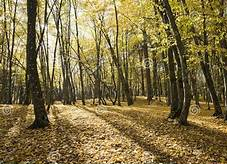Living Near Trees
“People of all ages and abilities enjoy higher levels of health and well-being when they have nature nearby in parks, gardens, greenways, naturalized schoolyards and playgrounds, and natural landscaping around homes and workplaces. . . Access to nature has been related to lower levels of mortality and illness, higher levels of outdoor physical activity, restoration from stress, a greater sense of well-being and greater social capital” (from the American Public Health Association, quoted in Breathing with Trees.)
Many sources from the Mayo Clinic to the American Psychological Association report that time in nature improves our mental health and sharpens our cognition.
Richrd Louv, in his book Last Child in the Woods: Saving Our Children from Nature-Deficit Disorder, states additional scientific findings about being near trees:
Gall bladder surgery patients who were in hospital rooms with a view of a grove of trees went home sooner than those who had a view of a brick wall.
Prison inmates who had a view of farmland had 25% less illness than those with a view of a prison courtyard.
People who watched images of a natural landscape after having a stressful experience calmed markedly in only 5 minutes.
Over 100 studies confirm that one of the main benefits of spending time in nature is stress reduction.
Children with nature nearby have less behavior conduct disorders, anxiety, and depression and have higher feelings of self-worth.
In a Swedish study, children and parents who live in places with outdoor access have twice as many friends.
It is important for parents who are currently raising young children to read this book. It shows the many ways that children are currently being damaged by being brought up with less connection to nature and this can be changed.
